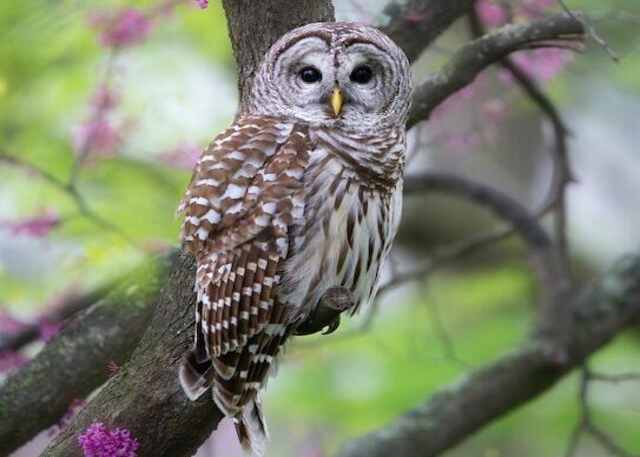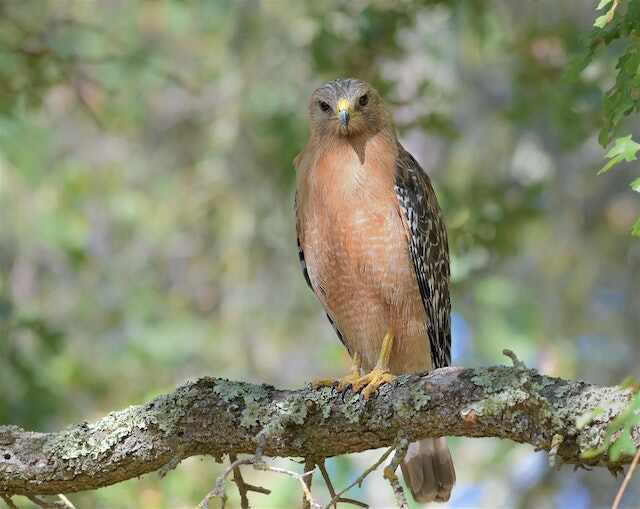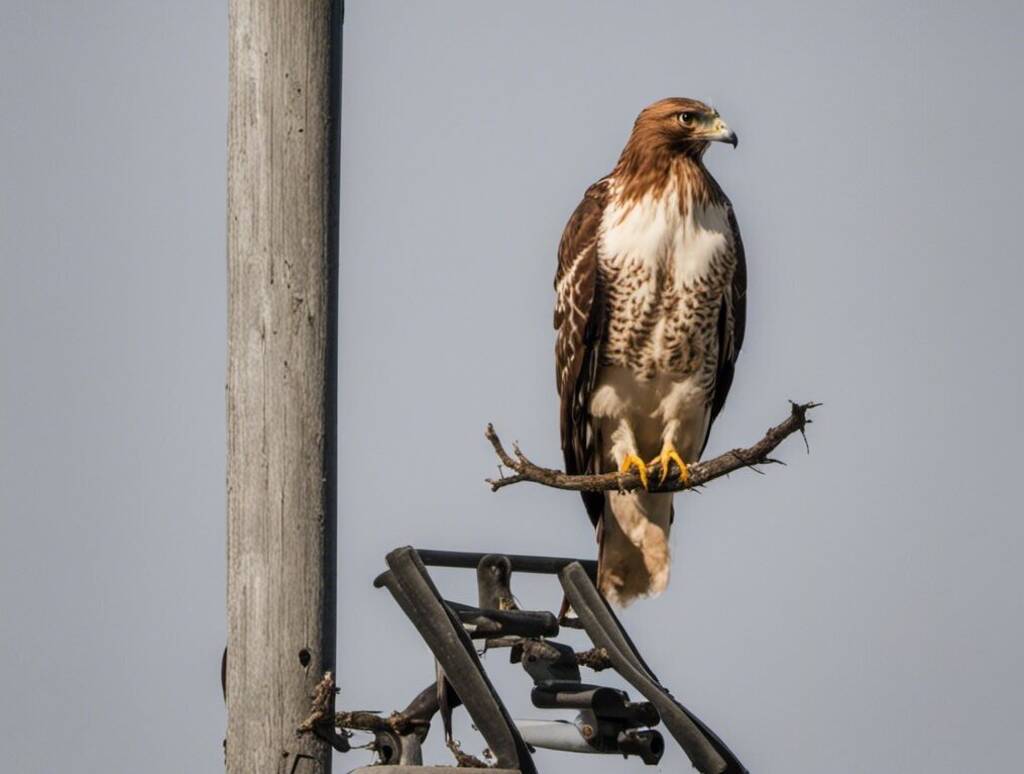When we think of pigeons, we often imagine them as ubiquitous and harmless city birds. However, these birds have natural enemies in the avian world, with several bird species known to prey on them.
Understanding the predator dynamics of pigeons is crucial to appreciate their survival strategies and their role in maintaining a balanced ecosystem.
Table of Contents
- 1 Key Takeaways
- 2 What Birds Eat Pigeons?
- 3 Predatory Birds: Pigeon-Hunting Specialists
- 4 Raptors: Masters of the Skies
- 5 Corvids: Clever Opportunists
- 6 Gulls: Coastal Pigeon Predators
- 7 Urban Hunters: Adaptation to City Life
- 8 Pigeon Predators in Action: Hunting Techniques
- 9 Impact on Pigeon Populations
- 10 Coexistence and Adaptation
- 11 Conclusion
- 12 FAQs: What Birds Eat Pigeons?
- 13 Author
Key Takeaways
- Several bird species include pigeons in their diet, including raptors, corvids, gulls, and urban hunters.
- Predatory birds have various hunting techniques, such as aerial attacks, ambushes, and pursuit strategies.
- Pigeon populations are impacted by predation, contributing to a balance to prevent overpopulation.

What Birds Eat Pigeons?
Birds that eat pigeons include hawks, falcons, eagles, owls, and other raptors. These birds are known as birds of prey and are carnivorous, feeding on a variety of small animals including rodents, reptiles, and other birds. While pigeons are not a primary source of food for most birds of prey, they may be taken as prey when other food sources are scarce.
Predatory Birds: Pigeon-Hunting Specialists
Birds of prey have evolved a range of strategies and adaptations to hunt and consume pigeons. Some birds have even made pigeons a staple part of their diet, displaying impressive hunting techniques and behaviors. Here are some bird species known for their pigeon-hunting prowess:
| Bird Species | Hunting Techniques |
|---|---|
| Falcons | Falcons are aerial hunters that stoop, or dive, at high speeds to catch pigeons in midair. Their talons are specially adapted to tackle prey in flight. |
| Hawks | Hawks are agile hunters that stalk their prey from a perch or soar in the sky, surveying the ground for potential targets. They dive at high speeds to catch unaware pigeons. |
| Eagles | Eagles are powerful hunters that use their sharp talons and strong beaks to catch and kill pigeons. They can ambush their prey from above or surprise them from nearby perches. |
| Owls | Owls are nocturnal hunters that can catch pigeons by surprise with their silent flight. They have sharp talons and strong bills that enable them to dispatch prey quickly. |
These predatory birds are known for their remarkable hunting skills and their ability to adapt to various habitats and prey preferences. Their success as pigeon hunters is a testament to the fascinating predator-prey dynamics in the bird world.
Raptors: Masters of the Skies
Raptors are birds of prey that are highly skilled in capturing and consuming other birds, including pigeons. They have strong, sharp talons and hooked beaks that help them catch, hold, and kill their prey. Raptors are known for their incredible speed and agility, making them effective hunters in the air.
Falcons, hawks, and eagles are some of the most common raptors that prey on pigeons. Falcon species like the peregrine falcon are known to be the fastest birds in the world, reaching speeds of up to 240 miles per hour when diving to catch their prey.
Hawks, like the Cooper’s hawk, are agile hunters that hunt pigeons by ambushing them in flight or attacking them while perched. Eagles, like the bald eagle, are powerful hunters that hunt pigeons by swooping down from the sky and grabbing them with their talons.
Unlike other predators, raptors often consume their prey whole, using their sharp beaks to tear apart the flesh and remove any feathers or fur. Raptors have incredible eyesight and can spot their prey from great distances, making them effective hunters even from high altitudes.
Despite their hunting prowess, raptors face several challenges when it comes to consuming pigeons. Pigeons are highly adaptable birds that can fly at high speeds, making them difficult to catch. Additionally, pigeons are social creatures that often flock together, making it difficult for raptors to isolate an individual bird for hunting.
Despite these challenges, raptors have still managed to thrive as effective predators of pigeons, demonstrating their incredible skills as masters of the skies.
Corvids: Clever Opportunists
Corvids are a family of birds that include crows, ravens, magpies, and jays. These birds are known for their high intelligence, and their ability to adapt to changing environments. They are opportunistic feeders, and will eat whatever they can find, including pigeons.
Corvids are known for their scavenging behavior and their ability to catch and kill small animals. They are also capable of stealing food from other birds, and will often eat the eggs and young of other bird species.
“Crows are highly intelligent birds that are capable of problem-solving and tool use. They have been known to use cars to crack open nuts, and to drop hard-to-open nuts onto roads so that cars will break them open.”
Magpies are another corvid species that prey on pigeons. They are known for their bold behavior, and will often swoop down and attack other birds, including pigeons, to steal their food.
Corvids are also known for their ability to mimic the calls of other birds, and will often use this skill to trick other birds into coming closer so that they can attack them.
Overall, corvids are clever opportunists that are well-adapted to surviving in a variety of environments. Their intelligence and adaptability make them effective predators of pigeons and other small animals.

Gulls: Coastal Pigeon Predators
Gulls are a common sight near coastlines and bodies of water. These opportunistic birds are known to feed on a variety of prey, including fish, crustaceans, and even garbage. However, gulls are also known to prey on pigeons.
Ring-billed gulls, in particular, have been observed hunting and killing pigeons. They use their size and strength to overpower their prey, swooping down from above to grab the pigeon with their beaks and talons.
| Gull Species | Prey | Habitat |
|---|---|---|
| Ring-billed gull | Pigeons, fish, insects | Coastlines, lakes, landfills |
| Herring gull | Crustaceans, fish, garbage | Coastlines, landfills |
| Western gull | Fish, invertebrates, garbage | Coastlines, bays |
Gulls have adapted to living near humans and have become accustomed to foraging for food in city environments. Pigeons, being commonly found in urban areas, are a readily available food source for gulls. Additionally, gulls have learned to recognize patterns in human behavior, such as when pigeons are being fed, and use this to their advantage when hunting.
Although gulls are not the primary predators of pigeons, their presence near urban areas can put additional pressure on pigeon populations. However, it is important to note that gulls also play a critical role in the ecosystem, helping to keep other populations in balance.
Urban Hunters: Adaptation to City Life
Some predators of pigeons have adapted to urban environments, where these birds are abundant. They have learned to navigate the busy streets, tall buildings, and other structures to pursue their prey. Peregrine falcons and owls are two examples of birds that hunt pigeons in cities.
Peregrine falcons are known for their incredible speed and aerial hunting skills. They take advantage of the high-rise buildings in cities, using them as perches and launching points for their attacks. They can reach speeds of up to 240 mph during a dive, making them the fastest bird on the planet. Once they spot their prey, they swoop down and grab it mid-flight, often killing it instantly.
Owls, on the other hand, are nocturnal hunters that have adapted to hunting in low-light conditions. They are silent fliers, using their specialized feathers to reduce noise from their wings. Unlike falcons, owls have powerful talons that they use to catch and kill their prey. They are also able to turn their heads almost 360 degrees, allowing them to spot prey in any direction.
Other species such as kestrels, hawks, and even seagulls have also adapted to urban environments and are commonly spotted hunting pigeons on city streets.
Despite the ever-changing cityscape, pigeons and their predators have found ways to coexist in urban environments. Pigeons have adapted by nesting in rooftops and other structures that provide shelter from predators. Some have even learned to recognize specific predators and alter their behavior accordingly to avoid detection.
Pigeon Predators in Action: Hunting Techniques
Birds have a variety of hunting techniques to catch pigeons, depending on their species and habitats. Some employ aerial attacks, while others use ambushes or pursuit strategies. Let’s take a look at some of the most common hunting techniques:
| Technique | Description |
|---|---|
| Aerial attack | Some bird species, like falcons and eagles, use an aerial attack to catch pigeons. They dive from the sky at high speeds and use their sharp talons to grab the prey. |
| Ambush | Corvids like crows and magpies often use an ambush to catch pigeons. They hide behind a bush or wall and wait for the prey to come close before pouncing on them. |
| Pursuit | Other bird species, like hawks, use a pursuit strategy to catch pigeons. They follow the prey closely while flying and catch them when they become tired or try to escape. |
“Some species of raptors are capable of speeds of up to 240 miles per hour and can catch pigeons mid-flight.” – Dr. John Marzluff, Professor of Wildlife Science, University of Washington
These techniques highlight the adaptability and intelligence of birds when it comes to hunting their prey.

Impact on Pigeon Populations
The diverse range of bird species that prey on pigeons plays a vital role in maintaining a balance in the ecosystem. While pigeons are often considered a nuisance in urban environments, their populations would explode without natural predators to control their numbers.
The impact of predation on pigeon populations can be significant, especially in areas where predators are more prevalent. Studies have shown that raptors, such as falcons and hawks, are responsible for a significant proportion of pigeon mortality. Similarly, corvids, seagulls, and other coastal birds are known to hunt and feed on pigeons in large numbers.
Although the impact of predators on pigeon populations varies by location and other factors, their presence helps prevent the overpopulation of pigeons. This, in turn, helps to mitigate problems related to pigeon droppings, noise, and other issues associated with high pigeon densities.
It is essential to recognize the vital role that birds of prey and other predators play in the ecosystem. Their presence helps to maintain a balance between prey and predator populations, promoting the health and stability of the environment.
Coexistence and Adaptation
As prey animals, pigeons have developed various adaptations to coexist with their natural predators. One of the most common adaptations is the selection of nesting sites. Pigeons often build their nests in hard-to-reach or high places such as on building ledges or rooftops, making it difficult for predators to reach them.
Another adaptation is their behavior when they detect the presence of predators. Pigeons emit alarm calls when they sense danger, alerting other birds in the area to take cover. They may also fly in large flocks, confusing and evading predators.
Interestingly, pigeons have been observed to change their behavior depending on the predator species they encounter. For example, when confronted with aerial predators like falcons, pigeons tend to fly in zigzag patterns or make sudden turns to evade pursuit. However, when ground predators such as rats are present, pigeons will stay still and huddle together to reduce the chances of being singled out and caught.
Despite these adaptations, bird predators have also learned to adapt to urban environments and have become more successful at catching pigeons in recent years. For example, peregrine falcons have been observed hunting in cities where their primary prey is pigeons, and some bird species have even learned to scavenge on leftover food from human sources, further increasing their chances of survival.
Conclusion
The world of bird predators is vast and diverse, and there are many species that prey on pigeons. From raptors to corvids, coastal birds to those that have adapted to urban environments, the list is long and fascinating.
Understanding the natural enemies and habits of pigeons is important in maintaining a balance in their populations. Even though predation can cause a decrease in pigeon numbers, it is necessary for the ecosystem’s health and prevents overpopulation.
Pigeons have been able to adapt to coexist with their predators, utilizing their behavior, nesting habits, and survival strategies. It is a testament to nature’s ability to balance itself out.
This article has highlighted the interesting predator-prey dynamics in the bird world and the role of various bird species in maintaining the ecosystem’s balance. Next time you see a pigeon, take a moment to think about the bird world’s intricacies and the role of predators in maintaining a healthy environment.

FAQs: What Birds Eat Pigeons?
What birds eat pigeons?
Predatory birds such as falcons, hawks, eagles, and owls are known to eat pigeons. Other species like corvids, gulls, and urban hunters also feed on pigeons.
Are pigeons natural prey for birds?
Yes, pigeons are natural prey for many bird species. Pigeons are often hunted and consumed by various avian predators.
What are some hunting techniques used by birds to catch pigeons?
Birds use aerial attacks, ambushes, and pursuit strategies to catch pigeons. They rely on their agility, speed, and hunting instincts to capture their prey.
How does predation impact pigeon populations?
Predation plays a significant role in maintaining a balance in pigeon populations. It helps prevent pigeon overpopulation and ensures the survival of healthier individuals.
How do pigeons coexist with their predators?
Pigeons have adapted behaviorally and physically to coexist with their predators. They use various survival strategies, such as nesting in inaccessible locations and being vigilant.


